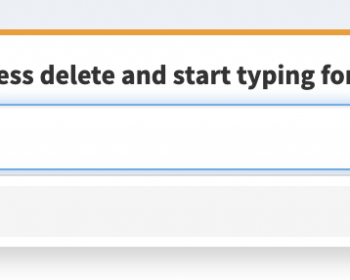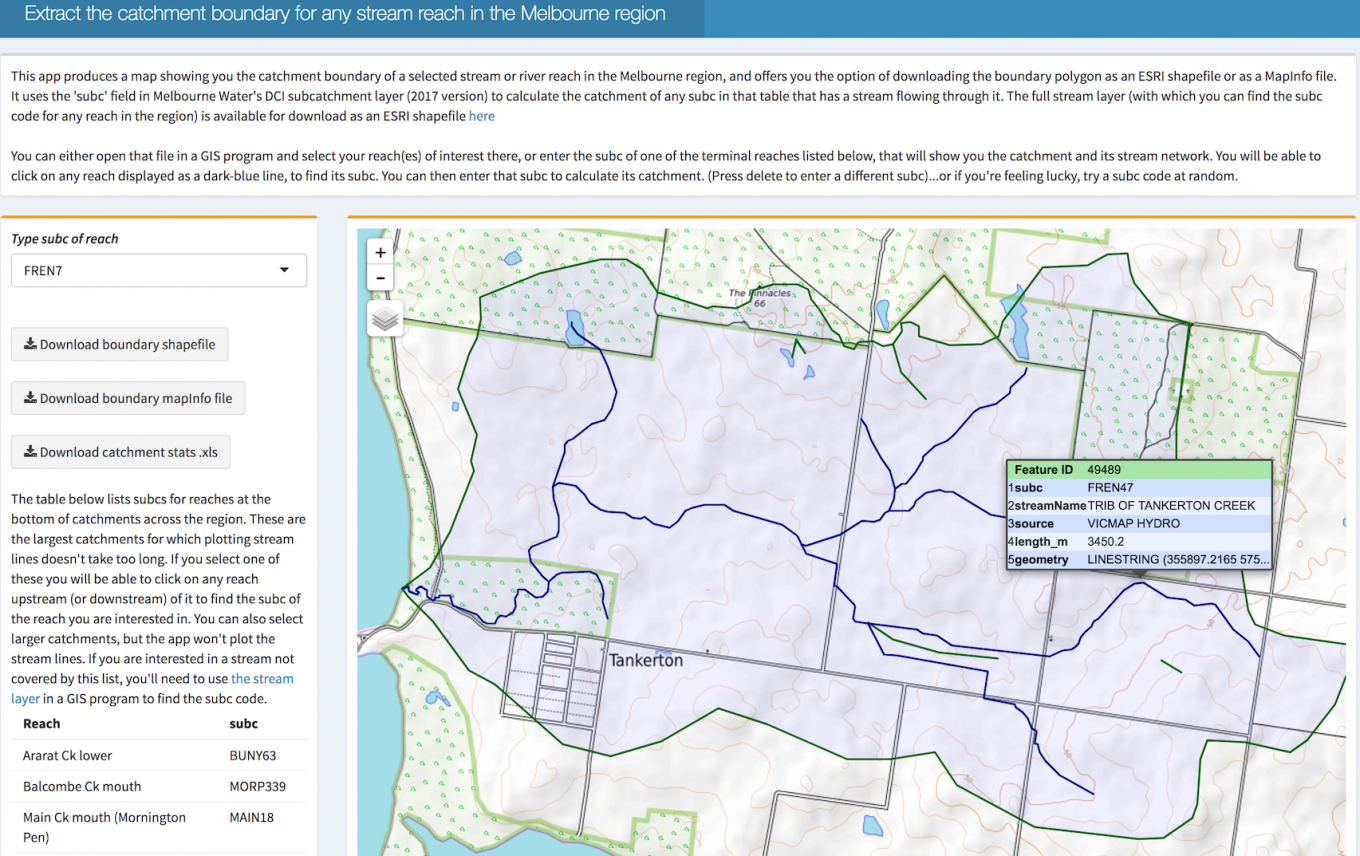Category: Shiny
Melbourne Water bug database now available
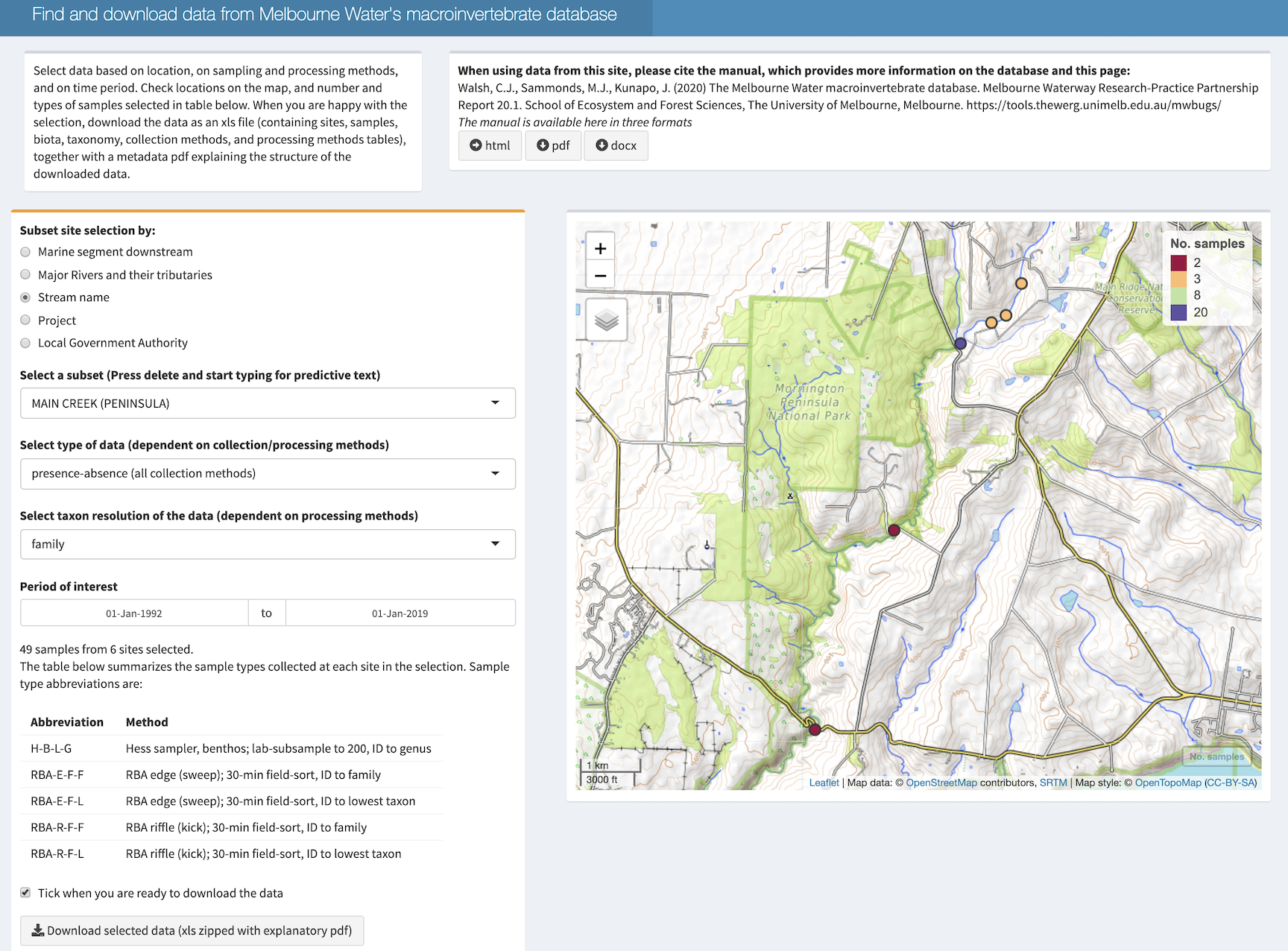
We have worked with Melbourne Water to collate their collection of macroinvertebrate assemblage records from streams of the Greater Melbourne region over the last 25 years into a database, and have made it available and searchable on an open-access web interface (https://tools.thewerg.unimelb.edu.au/mwbugs/). This rich resource of biological information has been…
A data entry app for Australian stream macroinvertebrates
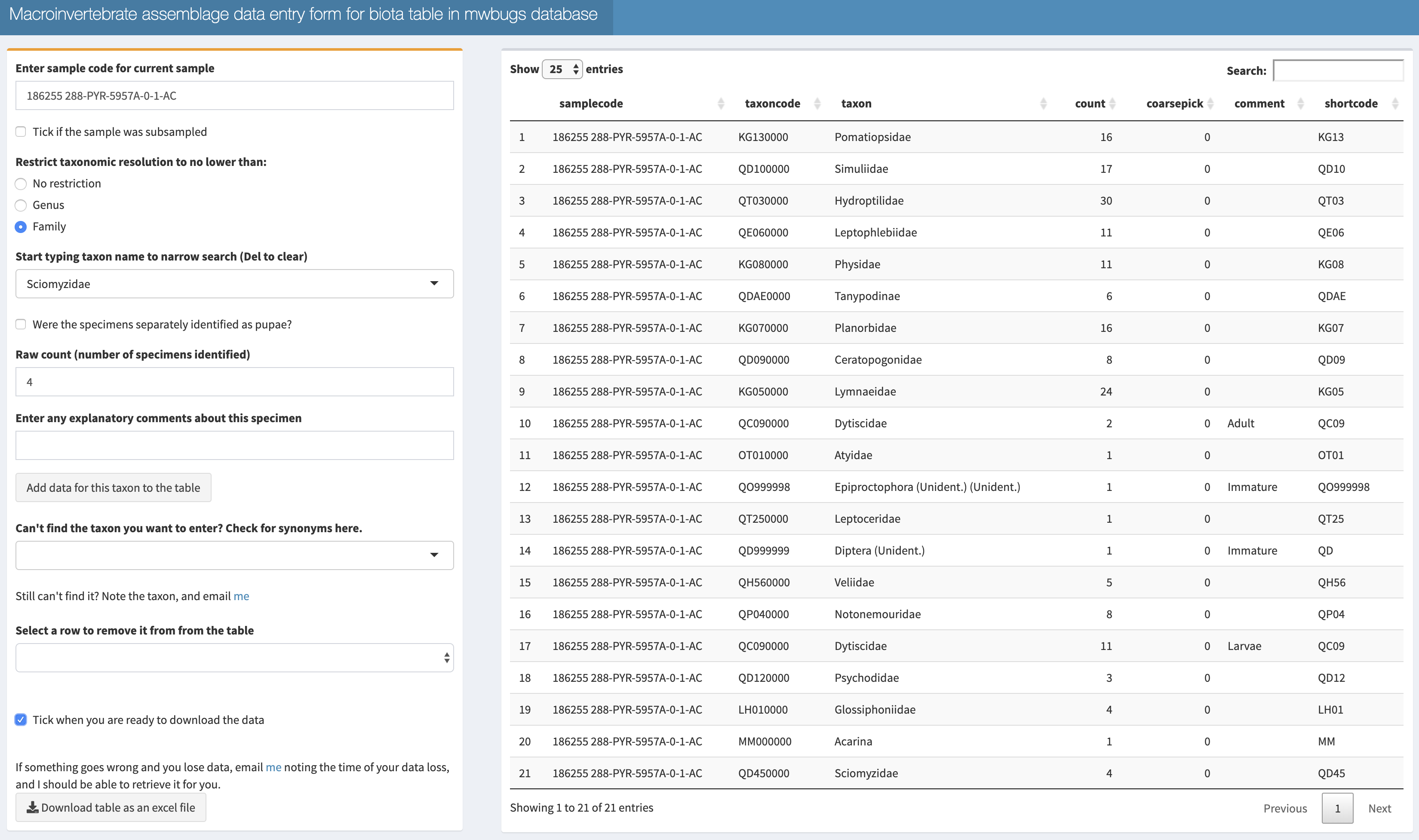
Sure, this might be a bit niche, but in preparation for the imminent release of a portal for Melbourne Water’s stream macroinvertebrate database, I’ve created a data-entry app for compiling macroinvertebrate assemblage data into a table that is suitable for entry into the database (and suitable for analysis on its…
A new year, a new server, a resolution of sorts
The desktop box that is urbanstreams.net is getting old. We are in the process of migrating the contents of this site to a more stable and secure location. The move has begun with our apps. Because he who is last will be first, the most recent app is the first…
Definitive Melbourne stream network now available
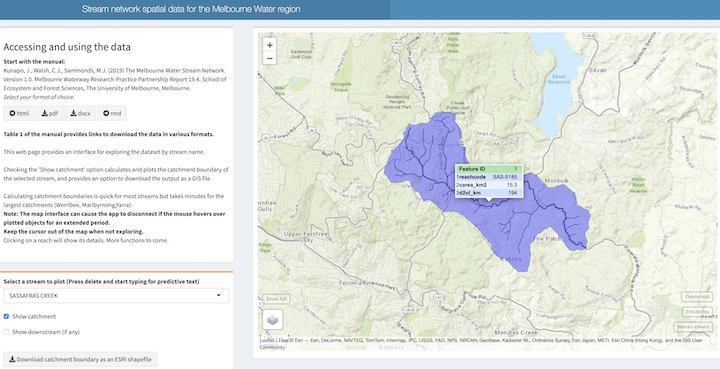
It’s been a long time between posts (I’ve been away for much of the year: more on that later). This return to the blog is to announce the completion of the Melbourne Water Stream Network v1.0, now available at tools.thewerg.unimelb.edu.au/mwstr/*. The stream network is a spatial database, comprising a stream…
Delineating catchment boundaries made easy
The LUMaR tool
Walsh and Webb (2013) developed a new index of stream condition, LUMaR*, based on their distribution models of 60 families of macroinvertebrates across the Melbourne region. The models allow prediction of the effects of loss (or gain) of forest cover and of conventionally drained urbanization on the occurrence of the 60 families….
A big step forward – escape from Optus
Happy days! We are finally moving out of our rental house, meaning that we can at last part ways with Optus as an internet service provider.* So, with a new IP address, urbanstreams.net can finally drag itself out of a dark, unvisited corner of the internet, with a proper URL….
Environmental Benefit Calculator resurrected
I posted a new beta version of the Environmental Benefit Calculator on urbanstreams.net today. The R package ‘Shiny’ has made the rewrite remarkably easy (and yet it has taken me forever). I still need to ‘prettify’ the page, but it seems to be mostly functional – doing all of the…
Melbourne Water bug database now available

We have worked with Melbourne Water to collate their collection of macroinvertebrate assemblage records from streams of the Greater Melbourne region over the last 25 years into a database, and have made it available and searchable on an open-access web interface (https://tools.thewerg.unimelb.edu.au/mwbugs/). This rich resource of biological information has been…
A data entry app for Australian stream macroinvertebrates

Sure, this might be a bit niche, but in preparation for the imminent release of a portal for Melbourne Water’s stream macroinvertebrate database, I’ve created a data-entry app for compiling macroinvertebrate assemblage data into a table that is suitable for entry into the database (and suitable for analysis on its…
A new year, a new server, a resolution of sorts
The desktop box that is urbanstreams.net is getting old. We are in the process of migrating the contents of this site to a more stable and secure location. The move has begun with our apps. Because he who is last will be first, the most recent app is the first…
Definitive Melbourne stream network now available

It’s been a long time between posts (I’ve been away for much of the year: more on that later). This return to the blog is to announce the completion of the Melbourne Water Stream Network v1.0, now available at tools.thewerg.unimelb.edu.au/mwstr/*. The stream network is a spatial database, comprising a stream…
Delineating catchment boundaries made easy
The LUMaR tool
Walsh and Webb (2013) developed a new index of stream condition, LUMaR*, based on their distribution models of 60 families of macroinvertebrates across the Melbourne region. The models allow prediction of the effects of loss (or gain) of forest cover and of conventionally drained urbanization on the occurrence of the 60 families….
A big step forward – escape from Optus
Happy days! We are finally moving out of our rental house, meaning that we can at last part ways with Optus as an internet service provider.* So, with a new IP address, urbanstreams.net can finally drag itself out of a dark, unvisited corner of the internet, with a proper URL….
Environmental Benefit Calculator resurrected
I posted a new beta version of the Environmental Benefit Calculator on urbanstreams.net today. The R package ‘Shiny’ has made the rewrite remarkably easy (and yet it has taken me forever). I still need to ‘prettify’ the page, but it seems to be mostly functional – doing all of the…




